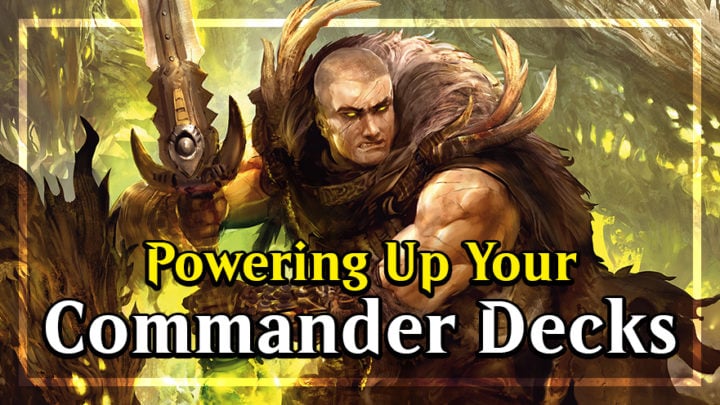I’ve been writing quite a lot about Commander here of late. One reason why is that discussion tends to prompt more discussion; my initial articles led to a lot of interesting chats online and with friends in my Magic groups who wanted to know more, or share their own take on what I’d written. And after writing a couple of articles about building and understanding powerful Commander decks, the most common piece of feedback I got was: “What about the deck I already have?”
While I’m glad with how my previous articles laid out some general guidelines for thinking about “power” as a concept in Magic, general advice will always fall short in a field as broad and subjective as Commander. So this week, I’ll be looking into some common problems that stop decks from realizing their potential — and what you can specifically do to recapture that potential without sacrificing identity or ownership.
BAD COMMANDER DECKS DON’T EXIST
I firmly believe that deck advice in Commander should start from the following position: whatever idea makes you excited to play your deck is sacred and worthwhile. While some strategies are inherently more effective at winning games, just telling people to throw their lifegain deck in the bin and play 4c Partner Combo/Control is unhelpful unless that player’s highest priority is winning competitive tournaments.
So when I suggest changes to make a deck more competitive — changes which inevitably necessitate cutting cards you currently play and which you might be attached to — I don’t intend to imply that you must discard the things you value because they’re “bad.” My goal in tuning decks is to help you become enough of a power player that your decisions matter to the table, and to help you put up enough of a fight that everyone has reason to show what their decks are capable of, instead of cruising to a win in 1st gear.
With that said, here are three common questions I often hear from my fellow Commander players.
“I CAN’T PLAY – THEY KEEP KILLING MY COMMANDER!”
This is the most common point of conflict between Commander’s ethos of creative self-expression and the realities of competitive gameplay. The vast majority of decks focus on their commander, often being built around their abilities and synergies from the get-go.
Having “guaranteed” access to commanders through the command zone helps make up for the unreliability of building around one load-bearing card — but they’re still a flashing weak point for all kinds of removal. And at a table with three opponents, that removal can quickly drive the commander tax past what you can afford to pay. For some commanders, this can feel like game over on the spot — especially those propping up very narrow synergies, uncommon tribes or specific, unique effects.
My first question for players stuck at square one like this is “can you simply become less reliant on your commander?” Ultimately, it’s very hard to keep your commander on the board if everybody else wants them gone, and if your deck doesn’t function without that creature, your opponents will be tempted to shut them down as soon as you pick up steam.
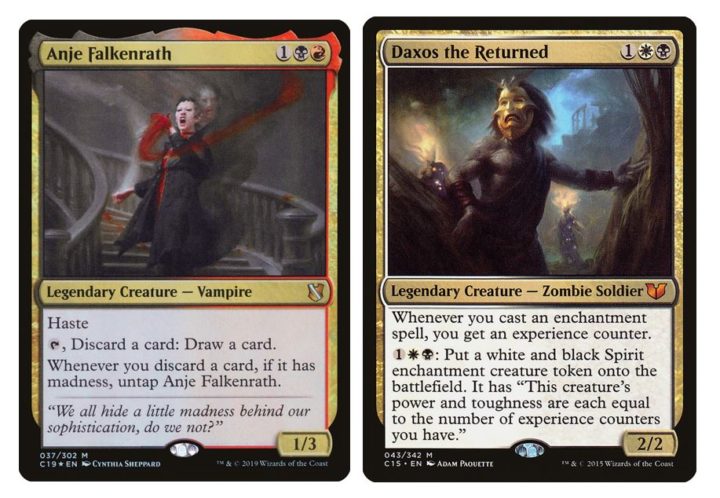
This doesn’t have to mean giving up on your desired theme. Instead, see if you can find cards that work well with or without your commander, while still serving your overall game plan. Anje decks can swap less useful madness spells for other graveyard mechanics like flashback, which get full value even from backup discard outlets. My own Daxos the Returned deck almost always wins in an avalanche of Spirit tokens — but the enchantments I use to rack up experience counters work independently in an aggro/hatebears strategy instead of strictly supporting the commander. The most important rule is that you shouldn’t rely on your commander as a sole source of card draw or mana ramp. There’s plenty of colorless options that can help keep the resources flowing (more on that in a moment).
However, sometimes diversification is simply impossible. Maybe your commander’s effect is uniquely irreplaceable. Maybe you built this whole deck specifically to watch them go off, and you have no interest in compromise! If it’s commander-or-bust for you, then make sure your build supports that — make sure you’re packing the full complement of equipment to grant them hexproof, indestructible and other powerful defenses. Lightning Greaves and Swiftfoot Boots are step one; Champion’s Helm and Darksteel Plate are pricier but worthwhile additions.
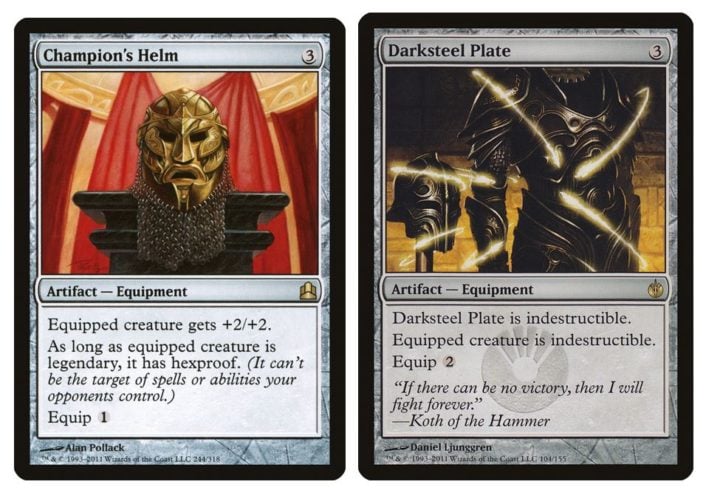
This equipment should usually be backed up by cheap, instant protection. Blue has its famous Force of Will and green has many variants of Heroic Intervention, but Akroma’s Will, Deflecting Swat, Fierce Guardianship, Flawless Maneuver, Selfless Spirit, Imp’s Mischief, Malakir Rebirth and Bolt Bend are available in other colors.
Last but not least, it’s worth at least trying the political solution: ask your table why they prioritize killing your commander so highly. It could be that your deck is legitimately too terrifying to leave alone — or maybe your commander just has a reputation for dominating games in other hands. At some point, this kind of targeting is just a vote against having your deck at the table — find out what you can do to make it more palatable.
“I RUN OUT OF CARDS TO PLAY AFTER MY STUFF GETS BLOWN UP”
This one is common for decks with a high average CMC, or which don’t play enough cards that scale with the level of resources available in the game — especially those locked to the Boros part of the color pie. If the goal of building powerful decks is to have greater agency in the game, running out of cards after the first board wipe and getting locked in topdeck mode while everyone else takes ten-minute turns must be the opposite of that.
The truth here is that Commander is a resource game, even more so than Magic usually is. The reason my ROAR power scale can equate all possible spells and abilities as just “resolutions” is because any given threat in a multiplayer game is likely to die before you have a chance to untap.
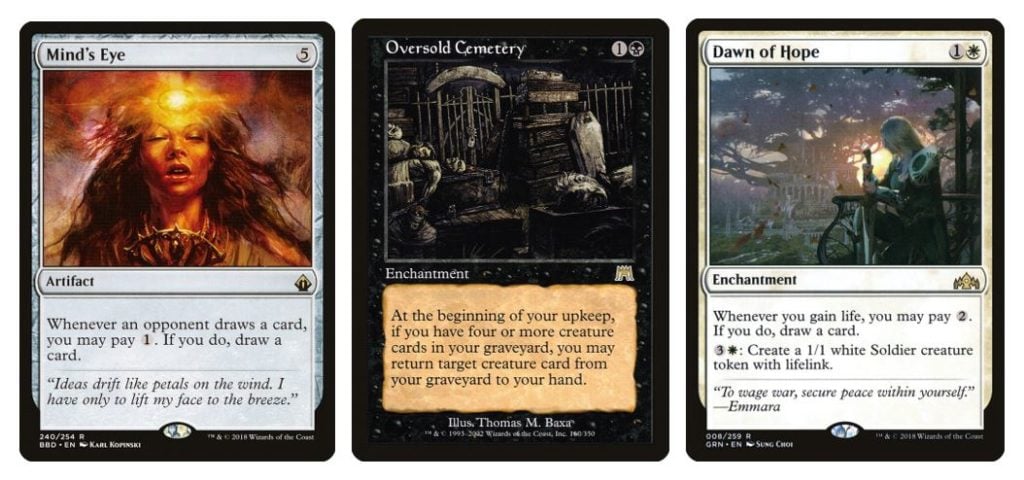
If you don’t have sources of card advantage in your deck, you’re certain to run out of cards to play as the game goes on. This includes artifact-based card advantage sources like Tome of Legends and Mind’s Eye, graveyard recursion like Oversold Cemetery, or just permanents you sink mana into, like Dawn of Hope. What’s important is that you always have things to do with the mana you get each turn — the fundamentals of Magic resource efficiency.
Once you have enough cards to play each turn, you may become bottlenecked on mana instead — especially if your cards average three or four mana each. Upping your “R2D2” (ramp, rocks, discounters, and dorks) will help you start double-spelling earlier in the game — which also means you can bluff having instants to protect your commander or other key forms of interaction. This turns out to be critically important if you want to avoid hitting the next problem…
“I CAN’T STOP MY FRIEND’S DECK BEATING ME, EVEN WHEN MY DECK WORKS WELL”
This is the symptom of a straightforward power-level mismatch at your table — and while not necessarily anyone’s fault, it sure can suck the fun out of the room. My ROAR power scale assumes that the most important measurement of a deck’s power level is how consistently it has its opponents “in check” — always poised to win with one spell, forcing you to constantly devote resources and attention to stopping it. Decks full of instant-speed infinite combos and tutor effects can win very quickly, while decks that just play the spells they draw and try to put a plan together on the fly are less threatening at the table.
If you’re the one playing a high-ROAR deck against a table of low-ROAR decks, you often end up feeling irrelevant to the outcome. You can spend four turns beating their life down from 40 to 10, and then have your opponent play two spells on your end step and win. That’s undeniably a sub-par experience, even for a loss. But if you aren’t threatening to win explosively yourself, and you can’t bluff having the right interaction to make opponents second-guess themselves, then you’re locked into a race where deterministic, table-killing win conditions triumph.
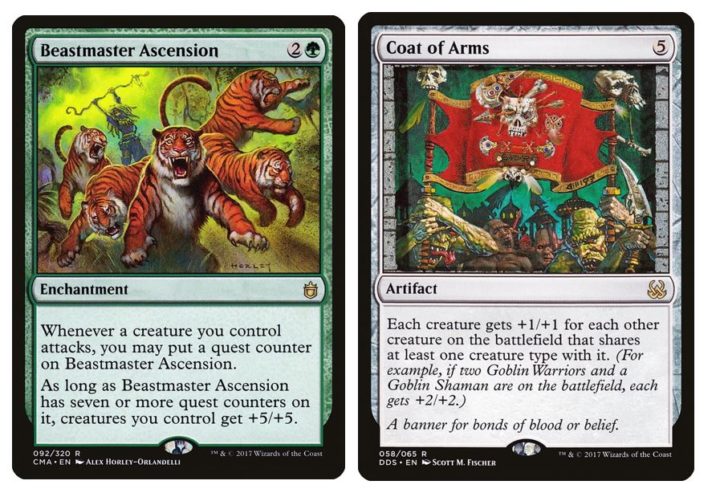
To combat this, you can lower your deck’s ROAR by focusing more on your most explosive combo-based win cons, or by making sure every card in your deck either contributes directly to your main plan or interacts with theirs.
If you’re set on winning through combat or other slow methods that leave opponents large windows to interact, you can do things to make that threat more explosive. A card like Beastmaster Ascension, Coat of Arms, Seize the Day or Charge Across the Araba can potentially multiply your damage output several times over in a single turn, giving you the chance to punish players who tap out. You can also go the other way and make your plan very hard to disrupt. Infect decks are good at this because you can win with very few attacks, and there are many ways to proliferate poison counters over time even if your infect creatures are answered.
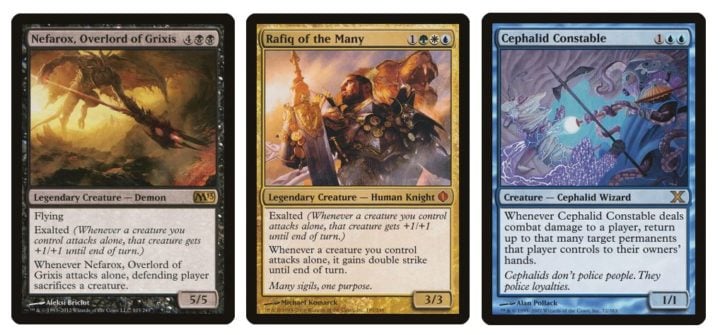
It’s usually possible to beef up your game plan this way without losing your identity. For example, a friend of mine first got into Commander wanting to play an exalted deck around Nefarox, Overlord of Grixis. I talked him down to playing Rafiq of the Many, since there’s just not enough exalted cards in mono-black. He packed his deck with all the exalted creatures in Bant, but found that he either wasn’t keeping up with the game, or winning simply off the combat power of Rafiq. He was adamant that he wanted an exalted deck, not a voltron deck focused solely on buffing a commander with double strike.
So I got him to plug in other cheap threats that get big value with exalted triggers, like Cephalid Constable. By trimming the most expensive and inefficient exalted cards, he kept the flavor of attacking with a choice of individual threats, and actually got to do it more often and more successfully.
ACHIEVING INSTANT SATISFACTION
But to really feel like you’re playing a game and not goldfishing, you need to be able to interact. Bite the bullet and make slots for all the cheap all-star interaction in your colors: Swords to Plowshares, Path to Exile, Fatal Push, Assassin’s Trophy, Beast Within, Counterspell, Negate, Disenchant, Chaos Warp, and more. Searching Scryfall for “o:destroy” and “o:exile” and sorting by EDHREC rank are easy ways to assess your options.

Make certain you have as many answers for non-creatures as you do creatures — or more, since they are often more pernicious threats. Red and black decks struggle the most here — black is at least getting enchantment removal like Pharika’s Libation and Feed the Swarm — but you do have emergency options. All Is Dust, Scour from Existence, Chaos Warp, Capricious Efreet, Unstable Obelisk and Universal Solvent have their place in most Rakdos lists — special shoutouts to Spine of Ish Sah and Meteor Golem for being easy to recur! While Ugin, the Spirit Dragon and Karn Liberated will test the wallet, Ugin, the Ineffable is a perfectly good card in its own right.
You’ll find best results if you scale your interaction to the metagame present in your playgroup. In casual groups, it’s unnecessary and even ineffective to play proactive or specialized disruption like Thoughtseize and Pyroblast. But at more powerful tables, those spells are the only ones efficient enough to keep you in the game; you may even need to build in “hate cards” like Nihil Spellbomb, Rule of Law or Grafdigger’s Cage to stop determined combo players.
To me, this is part of the appeal of Commander: it’s capable of emulating many of Magic’s other formats, depending on how you build. All that matters is that the whole table is playing the same one!

Tom’s fate was sealed in 7th grade when his friend lent him a pile of commons to play Magic. He quickly picked up Boros and Orzhov decks in Ravnica block and has remained a staunch white magician ever since. A fan of all Constructed formats, he enjoys studying the history of the tournament meta. He specializes in midrange decks, especially Death & Taxes and Martyr Proc. One day, he swears he will win an MCQ with Evershrike. Ask him how at @AWanderingBard, or watch him stream Magic at twitch.tv/TheWanderingBard.

